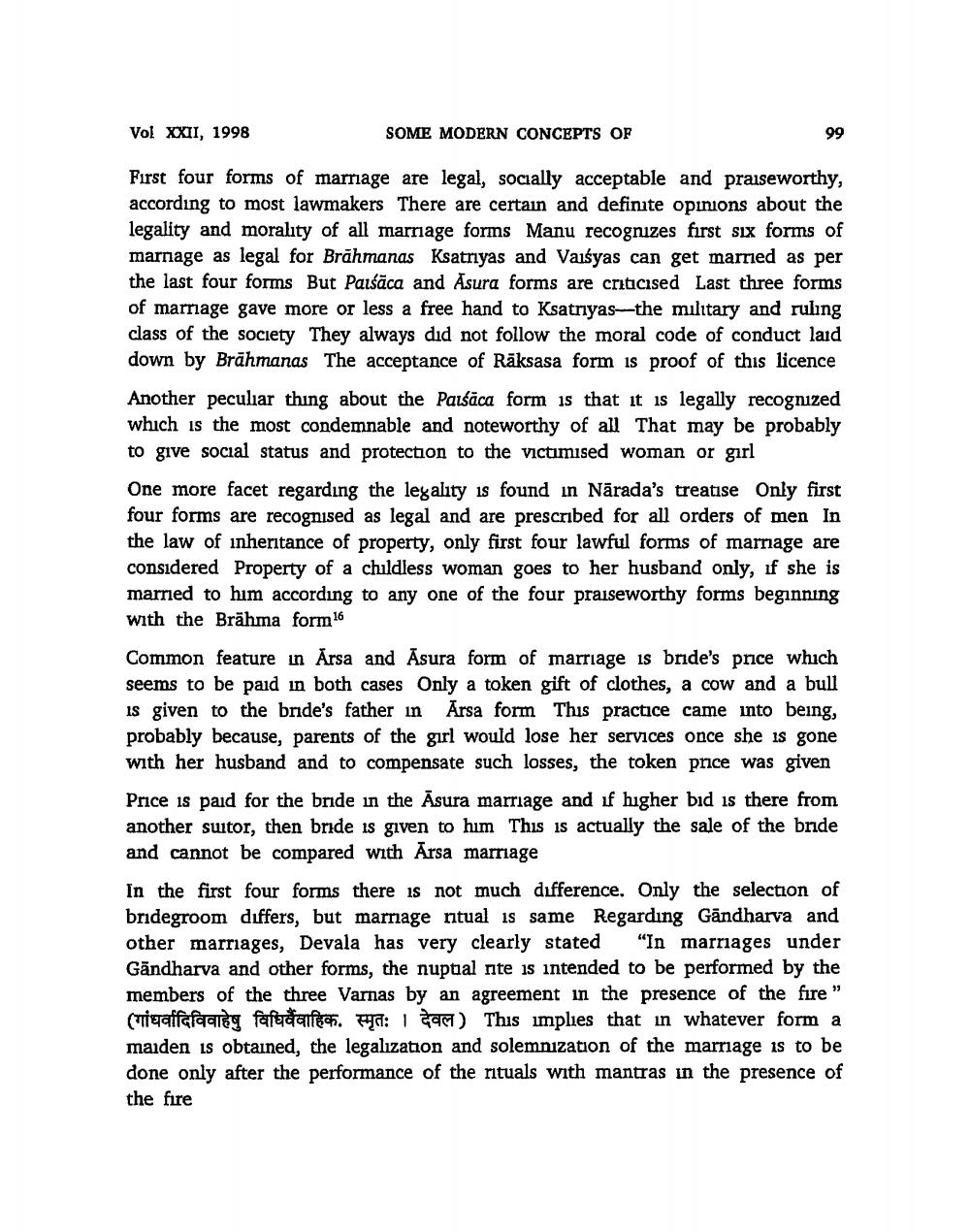________________
Vol XXII, 1998
SOME MODERN CONCEPTS OF
First four forms of marriage are legal, socially acceptable and praiseworthy, according to most lawmakers There are certain and definite opinions about the legality and morality of all marriage forms Manu recognizes first six forms of marnage as legal for Brāhmanas Ksatryas and Vaśyas can get married as per the last four forms But Paiśāca and Asura forms are criticised Last three forms of marriage gave more or less a free hand to Ksatriyas--the military and ruling class of the society They always did not follow the moral code of conduct laid down by Brāhmanas The acceptance of Rāksasa form is proof of this licence Another peculiar thing about the Parśāca form is that it is legally recognized which is the most condemnable and noteworthy of all That may be probably to give social status and protection to the victimised woman or girl
One more facet regarding the legality is found in Nārada's treatise Only first four forms are recognised as legal and are prescribed for all orders of men In the law of inheritance of property, only first four lawful forms of marriage are considered Property of a childless woman goes to her husband only, if she is married to him according to any one of the four praiseworthy forms beginning with the Brāhma form 16
Common feature in Arsa and Asura form of marriage is bride's price which seems to be paid in both cases Only a token gift of clothes, a cow and a bull is given to the bride's father in Arsa form This practice came into being, probably because, parents of the girl would lose her services once she is gone with her husband and to compensate such losses, the token price was given Price is paid for the bride in the Asura marriage and if higher bid is there from another suitor, then bride is given to him This is actually the sale of the bride and cannot be compared with Arsa marriage In the first four forms there is not much difference. Only the selection of bridegroom differs, but marriage ntual is same Regarding Gāndharva and other marriages, Devala has very clearly stated "In marriages under Gāndharva and other forms, the nuptial nte is intended to be performed by the members of the three Varnas by an agreement in the presence of the fire ” (misalfface faltaalle. Wa: 1 Sam) This implies that in whatever form a maiden is obtained, the legalization and solemnization of the marriage is to be done only after the performance of the rituals with mantras in the presence of the fire




